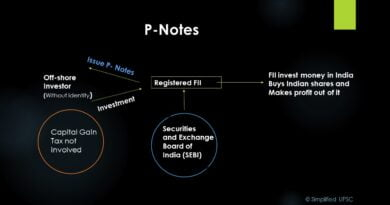P-8I Patrol Aircraft
Context:
Aircraft manufacturer Boeing has delivered the 12th P-8I long-range maritime patrol aircraft to the Indian Navy. This completes the follow-on clause for four additional P-8I aircraft contracted in 2016.
About P-8I Patrol Aircraft:
- P-8I is a long-range, multi-mission maritime patrol aircraft being manufactured by Boeing for the Indian Navy.
- It replaced the ageing fleet of the Indian Navy’s Tupolev Tu-142 aircraft.
- The P-8I aircraft is a variant of the P-8A Poseidon multimission maritime aircraft (MMA) operated by the US Navy.
- It was designed to protect the coastline and territorial waters of India.
- It can conduct anti-submarine warfare (ASW), anti-surface warfare (AsuW), intelligence, maritime patrol, and surveillance and reconnaissance missions.
- The Indian Navy became the first international customer for the P-8 aircraft in 2009.
- The Navy had procured eight P-8Is under a USD 2.2 billion deal in 2009. The aircraft are part of the 312A Naval Air Squadron based at Arakkonam in Tamil Nadu.
- In 2016, the Navy exercised the optional clause for four more P-8Is in a deal worth over USD 1 billion.
- Further in May 2021, the US State Department approved the possible sale of six additional P-8I aircraft and related equipment, to India.
- The six P-8Is will come installed with encrypted communication systems since India has now signed the foundational agreement Communications Compatibility and Security Agreement (COMCASA) with the US.
What is COMCASA?
- COMCASA stands for Communications Compatibility and Security Agreement and is one of the four foundational agreements that the S. signs with allies and close partners to facilitate interoperability between militaries and sale of high end technology.
- COMCASA is an India-specific version of the Communication and Information on Security Memorandum of Agreement (CISMOA).
- It comes into force immediately, and is valid for a period 10 years.
- COMCASA allows India to procure transfer specialised equipment for encrypted communications for US origin military platforms like the C-17, C-130 and P-8Is.
- Currently, these platforms use commercially available communication systems.
Evolution of India-US Defence relations:
- Two parallel tracks of dialogue began in the 1990s.
- The strategic dialogue covering nuclear issues shifted gears following the nuclear tests of 1998 and imposition of sanctions by the U.S.
- India-U.S. concluded a bilateral civil nuclear cooperation agreement in 2008.
- The defence dialogue began in 1995 with the setting up of the Defence Policy Group at the level of the Defence Secretary and his Pentagon counterpart and three Steering Groups to develop exchanges between the Services.
- A decade later, this was formalised and enlarged into the India-U.S. Defence Framework Agreement which was renewed for 10 years in 2015.
- Today, the U.S. is the country with which India undertakes the largest number of military exercises which have gradually evolved in scale and complexity.
- During the Cold War, more than three-fourths of India’s defence equipment was of Soviet origin. This gradually began to change, and in recent years, the U.S. and Israel emerged as major suppliers.
- The Indian Air Force went in for C-130J Hercules and the C-17 Globemaster aircraft, along with Apache attack helicopters and Chinook heavy lift helicopters.
- The Indian Navy acquired a troop carrier ship and the P-8I long-range maritime reconnaissance aircraft.
- An agreement for 24 multi-role helicopters for the Indian Navy is expected soon.
- The Indian Army went in for the M-777 howitzers and artillery radars.
- From a total of less than $400 million of defence acquisitions during 1947-2005, the U.S. has signed defence contracts of over $15 billion since.
- Pathfinder projects have been identified under this Defence Technology and Trade Initiative (DTII).
- To get around export control licensing and other bureaucratic hurdles, an India Rapid Reaction Cell in the Pentagon was set up. In 2016, India was designated as a ‘Major Defence Partner’ country.
- Another step forward in the middle of this year was the inclusion of India in the Strategic Trade Authorisation-1 (STA-1) category, putting it on a par with allies in terms of technology access. This should enable the DTII to graduate to more ambitious projects.
- UAV Technology sale to India approved. The transfer of the state-of-the-art UAV technology to India will be the first significant progress after India’s entry into the exclusive Missile Technology Control Regime (MTCR) and after the US has designated India as a major defence partner.
Source: The Hindu
You can find many articles on SECURITY (part of GS III) in our website. Go through these articles share with your friends and post your views in comment section.


